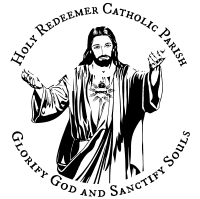The Eucharist, Part 5
Jesus Christ: Yesterday, Today, and Forever ~
Today we continue our twenty part series on the Eucharist. In case you missed the first three, you can find them here. This is in keeping with Archbishop Etienne’s pastoral letter on the Eucharist that you can find here (in case you missed it). Enjoy.
May God Bless You,
Fr. Thomas Nathe
Trent Horn, 20 Answers – The Eucharist. Catholic Answers Press. 2015
Get your own copy from Catholic.com
Question #5:
Wasn’t Jesus commanding the apostles to host a perpetual memorial dinner in his honor instead of commanding them to literally eat his body and blood?
When this question is asked it betrays either-or thinking. Specifically, it forces us to accept the false dilemma that either the Eucharist is a memorial dinner in honor of Christ or that it is a sacrifice involving his literal body and blood. But why can’t it be both? The Church teaches that the Eucharist is certainly a memorial meal, but it is not only a memorial. According to the Catechism:
At the Last Supper, on the night he was betrayed, our Savior instituted the Eucharistic sacrifice of his Body and Blood. This he did in order to perpetuate the sacrifice of the cross throughout the ages until he should come again, and so to entrust to his beloved Spouse, the Church, a memorial of his death and Resurrection: a sacrament of love, a sign of unity, a bond of charity, a Paschal banquet in which Christ is consumed, the mind is filled with grace, and a pledge of future glory is given to us (CCC 1323).
Jesus said, “Do this in memory of me,” and the words “in memory” come from the Greek word anamnesis, which means more than a mental recollection of a past event or person. It means instead, a “remembrance brought about by the act of sacrifice.” An example of this can be found in Leviticus 24:7-8, in which the Israelite priest and his sons are instructed to offer a memorial sacrifice of bread to the Lord each Sabbath. The verses say, “You shall put pure frankincense with each row, that it may go with the bread as a memorial (anamnesis) portion to be offered by fire to the Lord. Every Sabbath day Aaron shall set it in order before the Lord continually on behalf of the sons of Israel as a covenant forever.” The original Hebrew word for memorial in this passage, azkarah, also means “memorial offering.”
The parallel between this and the sacrifice of the Mass, at which holy bread is offered on the new Sabbath to commemorate the new, everlasting covenant in Christ, is uncanny. Similarly when Jesus said, “Do this in memory of me,” he did not mean simply, “Remember me when you eat this meal.” A more accurate translation of Jesus’ command would be, “Receive me as a memorial sacrifice.” The first Christians, who were raised in Judaism, would have had no difficulty understanding that a memorial dinner can bring about the actual presence of God. Bible scholar Brant Pitre puts it this way:
Just as God had been really present to his people in the tabernacle of Moses and the temple of Solomon, so now Jesus would be really and truly present to his disciples through the Eucharist. And just as the old bread of the Presence had been the sign of God’s “everlasting covenant,” so now the Eucharist would become the perpetual sign of the new covenant, sealed in his blood.
One final objection to the idea that Christ was instituting a sacrifice and not just a memorial meal was that Jesus was present at the Last Supper. How could Jesus have offered up a sacrifice of himself when the apostles could still see him? Did Jesus receive himself at the Last Supper?
The synoptic Gospels describe Jesus and the apostles eating this meal as a group, so it is improbable that Jesus abstained while the others ate. But how could Christ receive his own body and blood. It’s important to remember that Christ’s physical presence in the Eucharist is not limited by space and time. Dominican theologian Giles Dimock says, “(Christ) is not present in a merely physical way, but more like that of a glorified body, which according to St. Thomas, has qualities beyond the physical, without forsaking its bodiliness.”
This ability to transcend the spatial and the temporal allowed Christ to be physically present both in a human body before the disciples and also in the bread at the Last Supper. St. Thomas Aquinas said it was fitting that Christ would receive himself at the Last Supper, “Because Christ himself was the first to fulfill what he required others to observe: hence he willed first to be baptized when imposing baptism upon others: as we read in Acts 1:1: ‘Jesus began to do and to teach.’ Hence he first of all took his own body and blood, and afterwards gave it to be taken by the disciples.”
Finally, the New Testament gives us abundant evidence that Jesus envisioned the bread that would be offered in the Eucharist as something other than ordinary bread. For example, several Church Fathers translated the phrase “Give us this day our daily bread” (Mt 6:11) as “Give us this day our supernatural bread,” to more closely align with the original Greek text. Moreover, when Jesus appeared to the disciples on the road to Emmaus, he hid his identity until after he blessed and broke bread with them. In other words, Jesus made it clear that after his Resurrection his disciples would not see Jesus in a human form, but that he would instead be “known to them in the breaking of the bread” (Lk 24:35).

